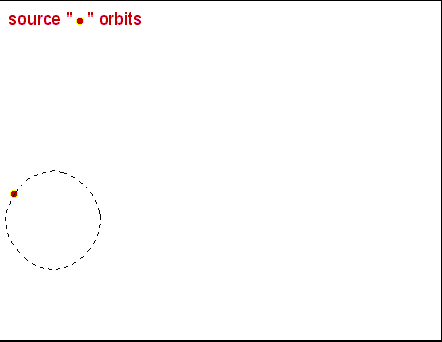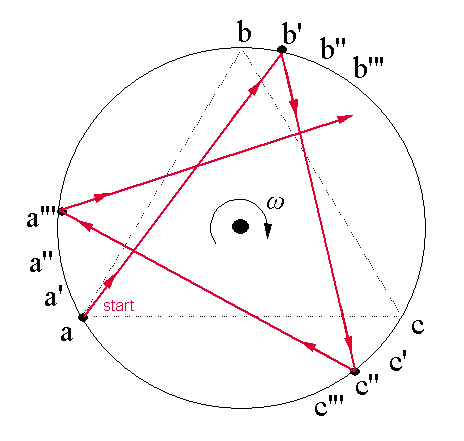Extinction Shift Principle� : The Details
On The Rectilinear Motion of the Waves and Photon
The rectilinear path of the photons which are the constituent parts of any wave front is considered in this emission theory. In previous emission theories, the geometry of the rectilinear motion and the consequence thereof were simply ignored, i.e., the baby was simply thrown out with the bath water. As opposed to any light bending effect or a warped space as assumed in Relativity, alternatively, an altering of the path of re-emitted photons is accomplished via electrodynamics of re-emission in Euclidean Space as a direct consequence of relative phase and conservation of energy. The principle of emission and re-emission suggest that an undisturbed photon simply cannot change its path. A primary photon moving undisturbed on a given path simply gives rise to a new secondary photon at the point of interference. The path of the new photon would be characteristic of the interfering medium. The primary photon will no longer exists. This Extinction Shift Principle demonstrates with clear examples that any medium continually subjects the photon to processes of re-emission, i.e., from primary to secondary, from secondary to tertiary, etc., etc., each segment propagating along in a pure rectilinear fashion.
A clear illustration is given for an explanation for the Sagnac Effect posted in Topic #01 and on the Sagnac Effect Revisited posted in Topic #08 by clicking on the Chalkboard of the homepage of this website. In Topic #03 this very important optical fundamental is graphically illustrated.

The Nature of the Rectilinear Motion of All Waves and their constituent Photons
This very important fundamental in optics has been virtually overlooked by all too many researchers in this area, pertaining to the rectilinear motion of all electromagnetic radiation, i.e., the wave fronts of light, the photons which are the constituent light particles that make up the wave fronts, propagating from optical element to optical element giving rise to the observed optical processes such as that of the Sagnac effect. This figure illustrates this very important fundamental, essential for the correct understanding of the Sagnac effect.
In Topic #08, a clear illustration is given where 3 optical elements rotate about a common center on a rigidly attached platform with an angular velocity of ω radians per second.

Illustration from Topic #03 on the Rectilinear Paths of the Waves for a Clockwise Loop
Details are given in Topic #03
We assume that the platform does not stretch or remain free of mechanical distortions so that the 3 point sources a, b and c remain at fixed distances between them. Let us assume that the platform rotates in a clockwise direction as indicated in the figures. It is important to note that in this illustration, 3 optical elements are described for the derivation of the Sagnac effect. It can be illustrated using the very same Mathematical Physics technique for four (n=4) optical elements to arrive at the very same phase shift for the Sagnac effect. Also, we can let n=6, or any larger numbers for point-like optical elements, emitting and re-emitting the rectilinearly propagating waves along looped paths. Details are given in Discouses & Mathematical Illustrations pertaining to the Extinction Shift Principle under the Electrodynamics of Galilean Transformations, Optical Gyroscopes (for n=3, n=4, n=6, n=large, n=very large for fiber media) pages 7 thru 13, Sagnac Effect (for n=4) page 14, 15 and 16.
On Mathematical Illustrations pertaining to the Extinction Shift Principle